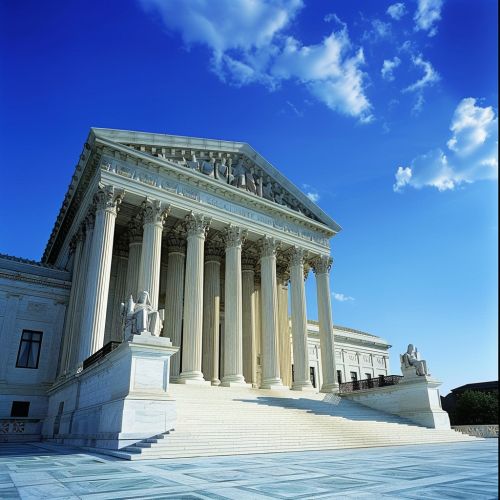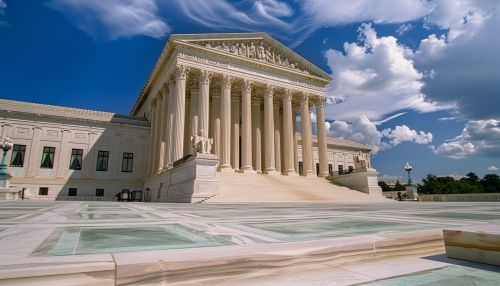New York Times Co. vs United States
Background
The case of New York Times Co. v. United States, 403 U.S. 713 (1971), is a landmark decision by the United States Supreme Court on the First Amendment. The ruling made it possible for New York Times and Washington Post newspapers to publish the then-classified Pentagon Papers without risk of government censorship or punishment. The Pentagon Papers were a classified study of the United States political and military involvement in Vietnam from 1945 to 1967.
Historical Context
The Pentagon Papers were commissioned by Secretary of Defense Robert McNamara in 1967. The study revealed that the U.S. government had systematically lied to the public and Congress about the Vietnam War. In 1971, Daniel Ellsberg, a military analyst, leaked the documents to the New York Times and other newspapers. The Nixon administration sought to prevent the publication, citing national security concerns. This led to a legal battle that culminated in the Supreme Court's decision.
Legal Proceedings
The government argued that prior restraint was necessary to protect national security. The New York Times countered that the public had a right to know the information contained in the Pentagon Papers. The case was expedited through the lower courts and reached the Supreme Court in a matter of weeks.
District Court and Court of Appeals
The initial injunction against the New York Times was issued by the U.S. District Court for the Southern District of New York. The case was then quickly appealed to the United States Court of Appeals for the Second Circuit, which upheld the injunction. Simultaneously, the Washington Post faced a similar injunction from the U.S. District Court for the District of Columbia, which was also appealed.
Supreme Court Decision
The Supreme Court heard oral arguments on June 26, 1971, and issued its decision on June 30, 1971. In a 6-3 decision, the Court ruled that the government had not met the heavy burden of proof required for prior restraint. The per curiam opinion stated that "any system of prior restraints of expression comes to this Court bearing a heavy presumption against its constitutional validity."


Opinions of the Justices
The decision included nine separate opinions, reflecting the complexity and significance of the case.
Majority Opinion
The per curiam opinion was brief and unsigned, emphasizing the heavy burden of proof required for prior restraint. Justices Hugo Black, William O. Douglas, William J. Brennan, Potter Stewart, Byron White, and Thurgood Marshall joined in the judgment.
Justice Black's Concurrence
Justice Black, joined by Justice Douglas, argued that the First Amendment's absolute protection of free speech and press should prevent any governmental interference with the press.
Justice Brennan's Concurrence
Justice Brennan emphasized that prior restraint was permissible only in cases where publication would cause inevitable, direct, and immediate harm to the nation.
Justice Stewart's Concurrence
Justice Stewart, joined by Justice White, acknowledged the government's interest in protecting national security but concluded that the government had not demonstrated sufficient harm to justify prior restraint.
Justice White's Concurrence
Justice White, joined by Justice Stewart, noted that while the government might have a case for prosecution after publication, it had not justified prior restraint.
Justice Marshall's Concurrence
Justice Marshall argued that the government's request for an injunction was an attempt to make law through the judiciary, which was not permissible.
Dissenting Opinions
Chief Justice Warren E. Burger, Justice John M. Harlan, and Justice Harry Blackmun dissented, each writing separate opinions.
Chief Justice Burger's Dissent
Chief Justice Burger argued that the case had been rushed through the courts without adequate consideration of the national security implications.
Justice Harlan's Dissent
Justice Harlan emphasized the need for judicial restraint and deference to the executive branch in matters of national security.
Justice Blackmun's Dissent
Justice Blackmun warned that the publication of the Pentagon Papers could have severe consequences for national security and foreign relations.
Impact and Legacy
The decision in New York Times Co. v. United States is considered a significant victory for freedom of the press. It reinforced the principle that the government cannot censor the press unless it can prove that publication would cause a "grave and irreparable" danger. The case has been cited in numerous subsequent cases involving the First Amendment and prior restraint.
Influence on Journalism
The ruling emboldened journalists to pursue investigative reporting on government activities. It set a precedent that the press could act as a check on government power, fostering a more informed public.
Legal Precedents
The case has been referenced in later cases involving prior restraint and freedom of the press, including Nebraska Press Association v. Stuart and United States v. Progressive, Inc.. It remains a cornerstone of First Amendment jurisprudence.
